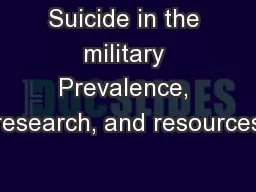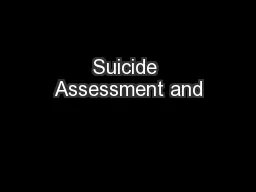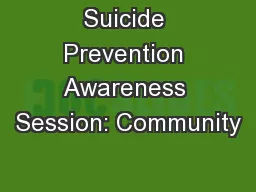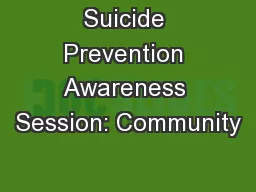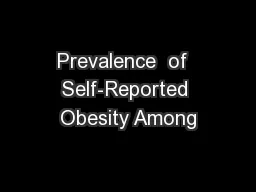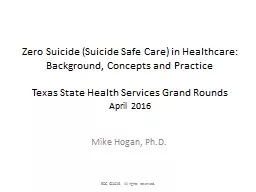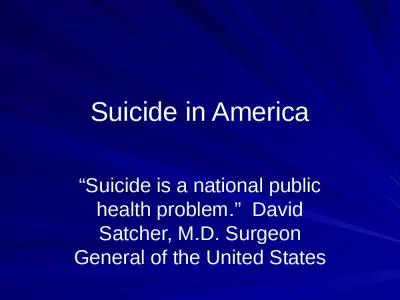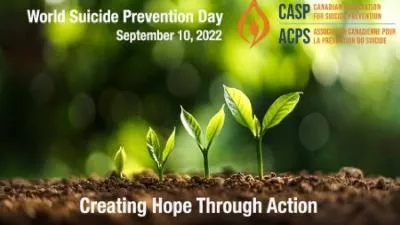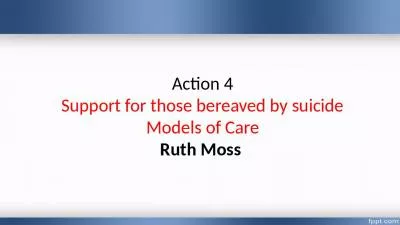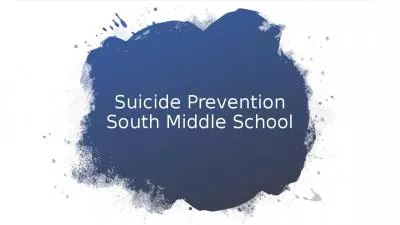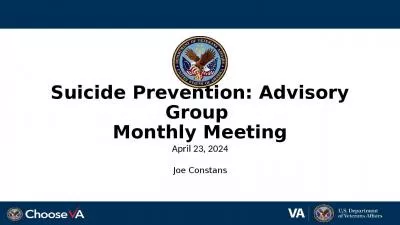PPT-Suicide in the military Prevalence, research, and resources
Author : stefany-barnette | Published Date : 2018-10-27
Daniel S DeBrule PhD Assistant Professor Indiana University South Bend Licensed Clinical Psychologist Feathergill amp Associates Project Director Alice Swarm
Presentation Embed Code
Download Presentation
Download Presentation The PPT/PDF document "Suicide in the military Prevalence, rese..." is the property of its rightful owner. Permission is granted to download and print the materials on this website for personal, non-commercial use only, and to display it on your personal computer provided you do not modify the materials and that you retain all copyright notices contained in the materials. By downloading content from our website, you accept the terms of this agreement.
Suicide in the military Prevalence, research, and resources: Transcript
Download Rules Of Document
"Suicide in the military Prevalence, research, and resources"The content belongs to its owner. You may download and print it for personal use, without modification, and keep all copyright notices. By downloading, you agree to these terms.
Related Documents

